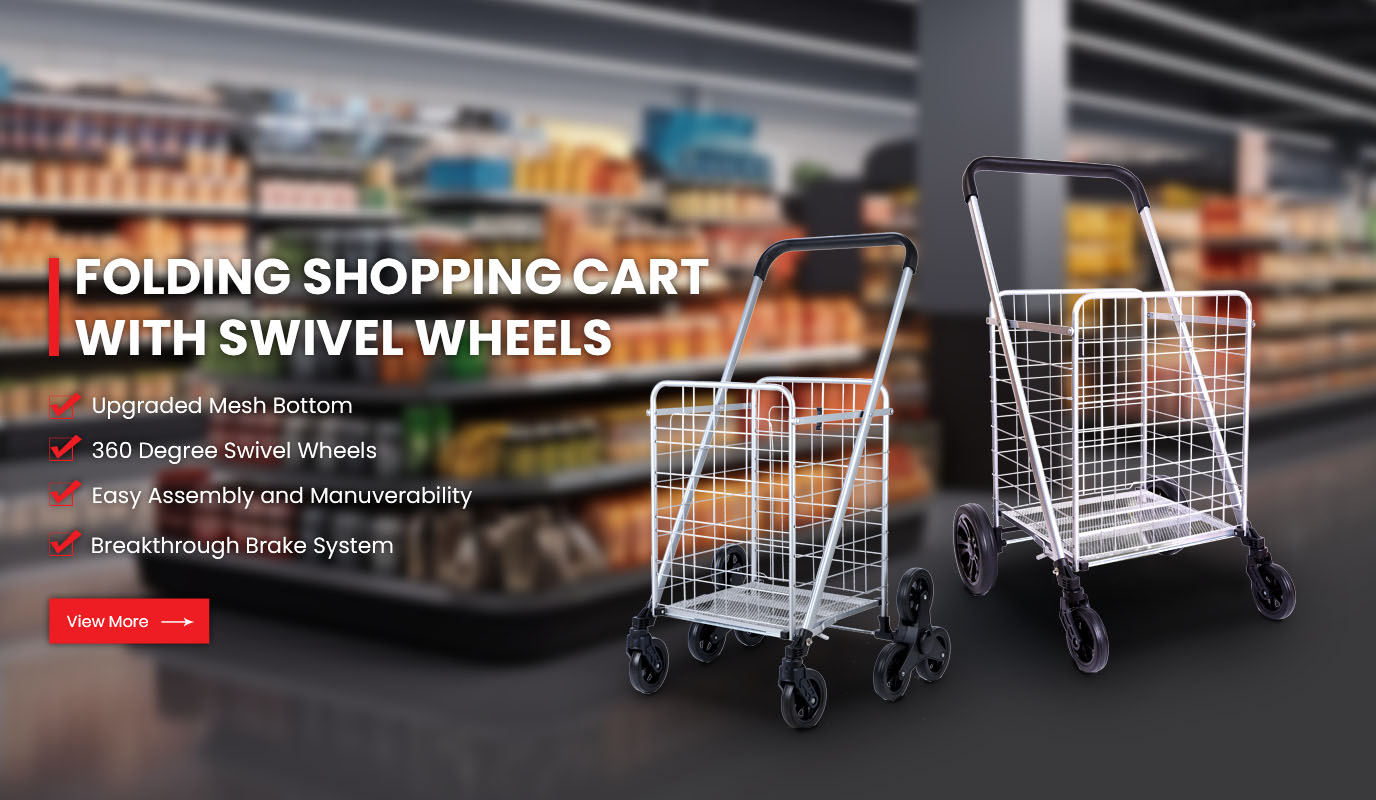A Strategic Transformation Window for Traditional Shopping Cart Manufacturers
The "unmanned cashier Shopping Cart" technology launched by Amazon's unmanned store is reshaping the technical infrastructure of physical retail. This Shopping Cart With Bag that integrates computer vision, sensor fusion and edge computing not only subverts the traditional shopping experience, but also poses a structural challenge to the technical reserves of traditional shopping cart manufacturers. In this technological revolution, traditional companies are not facing incremental upgrades, but quantum leaps in the entire product form.
Triple challenges formed by technological generation gaps
The technical genes of traditional shopping cart manufacturers are based on metal processing, ergonomics and basic injection molding processes. The unmanned cashier shopping cart needs to build a three-layer technology stack:
Perception layer: A weight sensor array with millimeter-level precision is required to work in conjunction with a multi-eye camera to achieve instant recognition of goods placed in a shopping bag. A certain technical solution shows that a single shopping bag needs to integrate 32 pressure sensors and 2 wide-angle cameras, which poses a direct challenge to the mold development and circuit integration capabilities of traditional manufacturers.
Cognitive layer: The product recognition algorithm needs to support real-time comparison of more than 50,000 SKUs, which puts forward new requirements for the heat dissipation design and power consumption control of the edge computing module. The power supply system of traditional shopping carts only supports lighting and simple electronic screens, while new shopping carts need to be equipped with computing units of more than 200W.
Security layer: IEC62443 security certification must be passed to prevent product data from being tampered with during transmission. This has an impact on the OEM electronic module supply chain that traditional manufacturers have long relied on, requiring them to establish independent security chip development capabilities.

Viable path map of technology migration
Facing the generational gap in technology, traditional manufacturers can adopt a "climbing upgrade" strategy:
Module cooperative development: Co-build a laboratory with a computer vision company to develop an AI recognition solution that adapts to the physical space of the shopping cart. Through this model, a European manufacturer has increased the accuracy of product recognition from 82% to 97%, while keeping the equipment cost increase below 15%.
Material technology breakthrough: Develop conductive composite materials to replace traditional metal frames to provide distributed power supply channels for sensor networks. The carbon fiber-polymer composite material developed by an Asian company reduces the weight of the shopping cart by 30% while increasing the electromagnetic shielding effectiveness by 40%.
Service-oriented transformation: Convert one-time equipment sales to a "hardware + subscription" model to create new value through continuous data services. The smart shopping cart maintenance system launched by a German manufacturer extends the life of equipment by 40% through predictive maintenance, and annual service revenue accounts for 28% of revenue.
Strategic window period for supply chain reconstruction
Technological changes are reshaping the supply chain structure of the shopping cart industry:
Upstream component standardization: Key components such as camera modules and lidar are forming universal standards for retail terminals. Traditional manufacturers need to lay out the certification system in advance. A company has shortened the adaptation cycle of new components by 60% by establishing an automated testing center.
Production process reengineering: Traditional welding assembly lines need to be upgraded to flexible electronic production lines. By introducing collaborative robots and 3D printing technology, a manufacturer has increased the installation yield of complex sensors from 68% to 92%.
Ecological niche reshaping: New shopping carts are becoming mobile data terminals, and traditional manufacturers can work with SaaS providers to develop shopping behavior analysis services. The hot zone dynamic line optimization tool launched by a company has helped retailers increase customer unit price by 12%, opening up a new growth curve beyond equipment sales.
This technological revolution is reshaping the competitive dimension of the shopping cart industry. If traditional manufacturers can complete the technology stack migration within 3-5 years, they will have the opportunity to transform from equipment suppliers to retail data service providers. Just as cars have evolved from mechanical devices to mobile smart terminals, the value of shopping carts is breaking through the physical carrier itself and becoming a new touchpoint connecting consumers with the digital world. Those companies that first complete the technological gene recombination will eventually occupy a strategic fulcrum in the new retail ecosystem.



